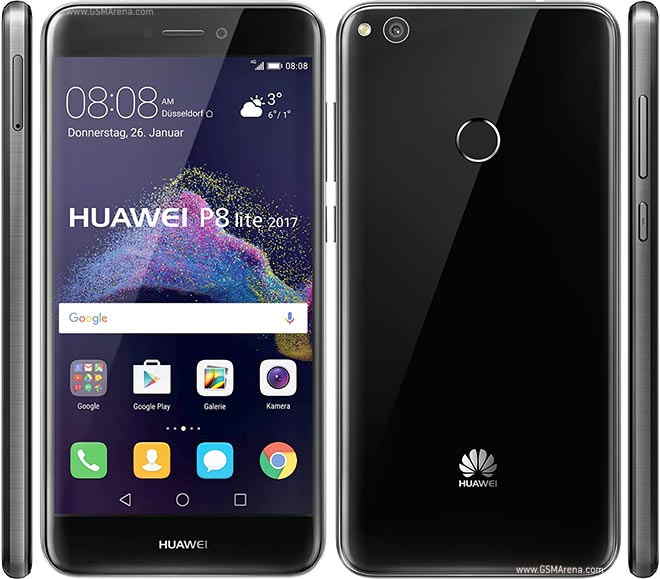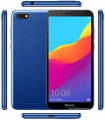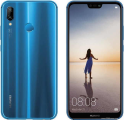Huawei P8 lite 2017 16 GB Prices
Important Note.
- All prices are in Pakistani Rupee (PKR)
- Prices may vary at stores and our effort will be to provide you with the updated prices.
- The latest price of Huawei P8 lite 2017 16 GB was obtained on 17 مئی, 2019. The prices at the original stores had been updated on the respective mentioned dates.
- Find out WhatMobile price has dropped in Pakistan by selecting Notify Price Drop button
- Find out WhatMobile has better specifications by clicking Add To Compare Button find out what Mobile has better reviews by visiting our reviews section
- Find out WhatMobile is cheaper on which retailer by clicking Compare prices from retailers button
Search Terms
- Huawei P8 lite 2017 16 GB
Specifications
| GENERAL | |
| 2G Network | GSM 850 / 900 / 1800 / 1900 - SIM 1 & SIM 2 |
|---|---|
| 3G Network | HSDPA 850 / 900 / 1900 / 2100 |
| 4G Network | LTE |
| Sim | Hybrid Dual SIM (Nano-SIM, dual stand-by) |
| Announced | 19/01/2017 |
| Status | Available. Released 2017, January |
| BODY | |
| Dimensions | 147.2 x 72.9 x 7.6 mm (5.80 x 2.87 x 0.30 in) |
| Weight | 147 g (5.19 oz) |
| DISPLAY | |
| Display Size | 5.2 inches, 74.5 cm2 (~69.5% screen-to-body ratio) |
| Resolution | 1080 x 1920 pixels, 16:9 ratio (~424 ppi density) |
| MultiTouch | Yes - Emotion 5.0 UI |
| SOUND | |
| AlertTypes | Vibration; MP3, WAV ringtones |
| LoudSpeaker | Yes |
| 3.5mm jack | Yes - Active noise cancellation with dedicated mic |
| MEMORY | |
| CardSlot | microSD, up to 256 GB (uses SIM 2 slot) |
| Internal | 16 GB, 3 GB RAM |
| DATA | |
| GPRS | Yes |
| EDGE | Yes |
| Speed | HSPA 42.2/5.76 Mbps, LTE Cat4 150/50 Mbps |
| WLAN | Wi-Fi 802.11 b/g/n, Wi-Fi Direct, hotspot |
| Blue Tooth | 4.1, A2DP, EDR, LE |
| NFC | Yes (market dependent) |
| USB | microUSB 2.0, USB On-The-Go |
| CAMERA | |
| Camera Primary | 12 MP, autofocus, LED flash |
| Camera Features | Geo-tagging, touch focus, face/smile detection, panorama, HDR |
| CameraVideo | 1080p@30fps |
| CameraSecondary | 8 MP, f/2.0, 1080p |
| FEATURES | |
| Processor Cores | Octa-Core |
| OS | Android 7.0 (Nougat) |
| CPU | Octa-core (4x2.1 GHz Cortex-A53 & 4x1.7 GHz Cortex-A53) |
| Sensors | Fingerprint (rear-mounted), accelerometer, proximity, compass |
| Messaging | SMS(threaded view), MMS, Email, Push Mail, IM |
| Browser | HTML5 |
| Radio | FM radio |
| GPS | Yes, with A-GPS, GLONASS |
| Colors | Black, White, Gold, Blue (India) |
| Others | - XviD/MP4/H.264/WMV player - MP3/eAAC+/WMA/WAV/Flac player - Document viewer - Photo/video editor |
| BATTERY | |
| Battery | Non-removable Li-Ion 3000 mAh battery |
| MISC | |
Reviews

Huawei is trying to take hold of the US smartphone market through the backdoor, so to speak. The Chinese firm just released the $249 (about £162, AU$320) P8 Lite in the states solely through Amazon and its own online store.
Designed to work with just about any SIM card (or two, thanks to dual SIM slots), the P8 Lite is aimed at folks that can't swing the fat subsidies lathered onto the "just $199 with two-year contract" deals that the carriers push for the latest flagship phones.
Of course, Huawei looks to offer as much of that primo phone experience as possible for as close to the same price as possible. At a (longer than normal) glance, how does the P8 Lite manage that herculean task?

Design
In case you hadn't noticed, the P8 Lite is essentially a budget version of the company's flagship Huawei P8. Through and through, this phone is the P8, only more plastic and a bit slower on the uptake.
The 5-inch phone comes housed in a somewhat-thin 7.7mm, unibody plastic frame that's banded by brushed chrome, with its large volume rocker, power button and dual SIM card slots on the right side of this band. (Naturally, they're all in chrome too.)
Much like the majority of leading flagship smartphones of today, the P8 Lite takes on a rounded rectangular shape. Like many iPhones before it (and now the Galaxy S6), there is no curvature to this handset, save for its rounded corners.

You'd think that, at 5 inches, it'd be hard to handle the P8 Lite with one hand. Not so, even for a guy with smaller hands like myself. Part of that could be due to how light the phone is – just 4.62 ounces – thanks to its plastic frame.
Overall, the phone is easy to handle and feels substantial in my hand. But I have to admit: I'm a bit too spoiled by aluminum handsets to "enjoy" holding a plastic phone.
Huawei has released the P8 Lite in three colors: white with silvery chrome trim (as you see here), white with gold trim and black with a deeper chrome trim.

Performance and display
Frankly, it's safe to expect less-than-blistering speeds from a mid-range Android phone, and that's just what the P8 Lite provides. With an octa-core (that's eight cores), 1.5GHz Snapdragon 615 processor and 2GB of RAM running Android 4.4 KitKat (through Huawei's custom Emotion UI), this thing looks like it would be blazing fast on paper.
In my brief time with the handset, I found switching between apps to show a more than noticeable delay. Furthermore, switching orientation between landscape and portrait within apps proved to be awfully slow. That said, it's unfair to expect much more for 250 bucks flat.
As for space to fit all those apps and photos, 16GB of storage is onboard, but that's expandable to up to 32GB through a microSD slot. However, that memory card slot doubles as the P8 Lite's second LTE SIM card slot. So, you better reserve that SD card for photos and other non-essentials if you travel a lot or have two numbers.

All of this rests behind a 720 x 1,280 touchscreen – did I mention this is a mid-range phone? You can definitely see the pixels on this display, especially when reading articles or sending text messages. At any rate, colors pop vibrantly on the not-so-sharp screen, which is what matters most for watching videos on your commute.
Camera
Now, as for taking photos and video, the P8 Lite's mid-range flag waves once more. Through its 13-megapixel rear snapper, photos are no doubt crisp, but are generally filled with noise without the perfect lighting conditions. You can expect your selfies to turn out in about the same quality, if not worse, with a 5MP shooter up front.
Huawei's touting two unique camera software features with the P8 Lite: Ultra Snapshot and All-focus. The former allows you to shoot photos with the rear lens while the phone is locked by just double tapping the lower end of the volume rocker.

However, without optical image stabilization, the force required to do that causes the phone to move in your hands just enough to screw up your shot. (The photo you see here was taken using this feature.)
All-focus essentially takes multiple snaps within a single press, taking in light and depth data from multiple focal points. This allows you to change the focus after the fact. In theory, it sounds awesome, but in practice it's little more than a neat trick. And don't even try this on remotely moving subjects – you'll get different "shots" as you change the focal point.
In short, if you pick up this phone, you might want to hold onto the point-and-shoot.

Early verdict
I find budget-priced devices the toughest to pass early or final judgment on, and the P8 Lite is no exception. It's all about leveling your expectations. For just 250 smackers, you're getting a phone that will do the basics just fine, with neat features – like dual SIM support and an octa-core chip – to boot.
Plus, the phone works on just about every LTE network under the sun, including both CDMA and GSM, the two most popular network types in the US. That said, the P8 Lite is handily beat by Alcatel's Idol 3 with its 5.5-inch, 1080p IPS screen for the same price. But if that sounds just too big for you, the P8 Lite will likely be the budget 5-inch phone to beat for some time.
Write Your Own Review
My Recent Reviews
- Be first to post review for this product.
comments powered by Disqus







.jpg)


.jpg)
.jpg)
-16-GB.jpg)

-32-GB.jpg)













